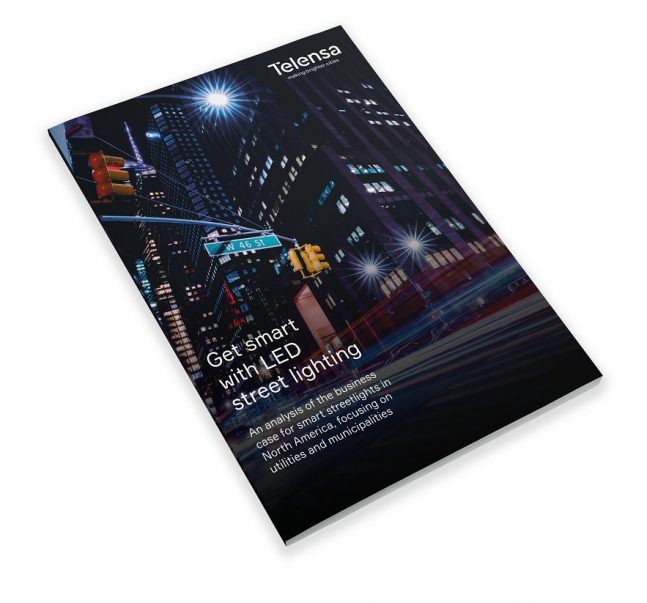
Photo: US-brochure_washington_shutterstock_541444330
The case for smart streetlights
19 February 2021
Smart streetlighting is about controlling entire public lighting systems from a keyboard or remote device. It requires streetlights to be connected – usually using a wireless technology – and for each individual streetlight to be represented digitally in a Central Management System (CMS) so that it can be controlled and managed via a central dashboard. There are numerous benefits that arise as a result, but the core principle is that by becoming a dynamic asset, streetlights can be managed in a way which saves money, reduces energy consumption and creates safer, more liveable places to live and work.
Should we adopt streetlighting with controls?
Analysts predict more than one third of streetlights in the U.S. will be connected to smart controls by 2029. With streetlights accounting for as much as 40 percent of the electricity consumed by a municipal government, it is not at all surprising that cities across North America are adding controls to hundreds of thousands of streetlights.
Proven business case
Los Angeles converted 165,000 streetlights to LED and upgraded 110,000 with smart controls. They report seeing 63 percent in energy savings and 48,000 tons of CO₂ saved per year.
Western Riverside Council of Governments reported 11 jurisdictions deciding to acquire and convert their streetlights. They realised nearly US$70 million in savings over 20 years. NEEP is a not-for-profit, energy efficiency organisation – one of six Regional Energy Organizations (REEOs) funded in part by the U.S. Department of Energy. NEEP sets out the business case for LED streetlighting and controls and their calculations suggest a payback period of approximately 4-6 years.
The City of Harrisburg worked with Telensa to deploy over 4,000 connected streetlights spanning the whole city. The city achieved an annual energy cost saving of US$510,000 with additional operational and maintenance savings of US$60,000 per year. In terms of their carbon footprint, the city’s energy saving is the equivalent of removing 548 vehicles off the road.
Enlightened tariffs
Clearly, utility company tariffs will have a bearing on the level of savings which can be achieved by implementing lighting controls. There has been some pioneering work in this area.
Pennsylvania utility PECO has introduced a new flexible tariff (rate SL-C). This monetises the energy-savings realised by dimming streetlights at certain times and from trimming burn-times.
Smart city innovation

The introduction of an intelligent infrastructure to support smart streetlights could pave the way towards other connected applications on the road to a smart city. The City of Harrisburg has since built on its initial investment to add additional smart city sensors to its streetlight platform. Traffic radars, air quality sensors and waste monitoring applications all provide data into the single system, driving insights for smarter, more efficient, joined-up services.
For those pioneering organisations which have already made the move, the business case for streetlights with smart controls is clear. Managing streetlights by way of a wireless network and a software-based Central Management System translates into better services for residents and creates greener, safer, more liveable cities.
This article is an extract from a full analysis of the business case for smart streetlights in North America.
Brought to you by:


